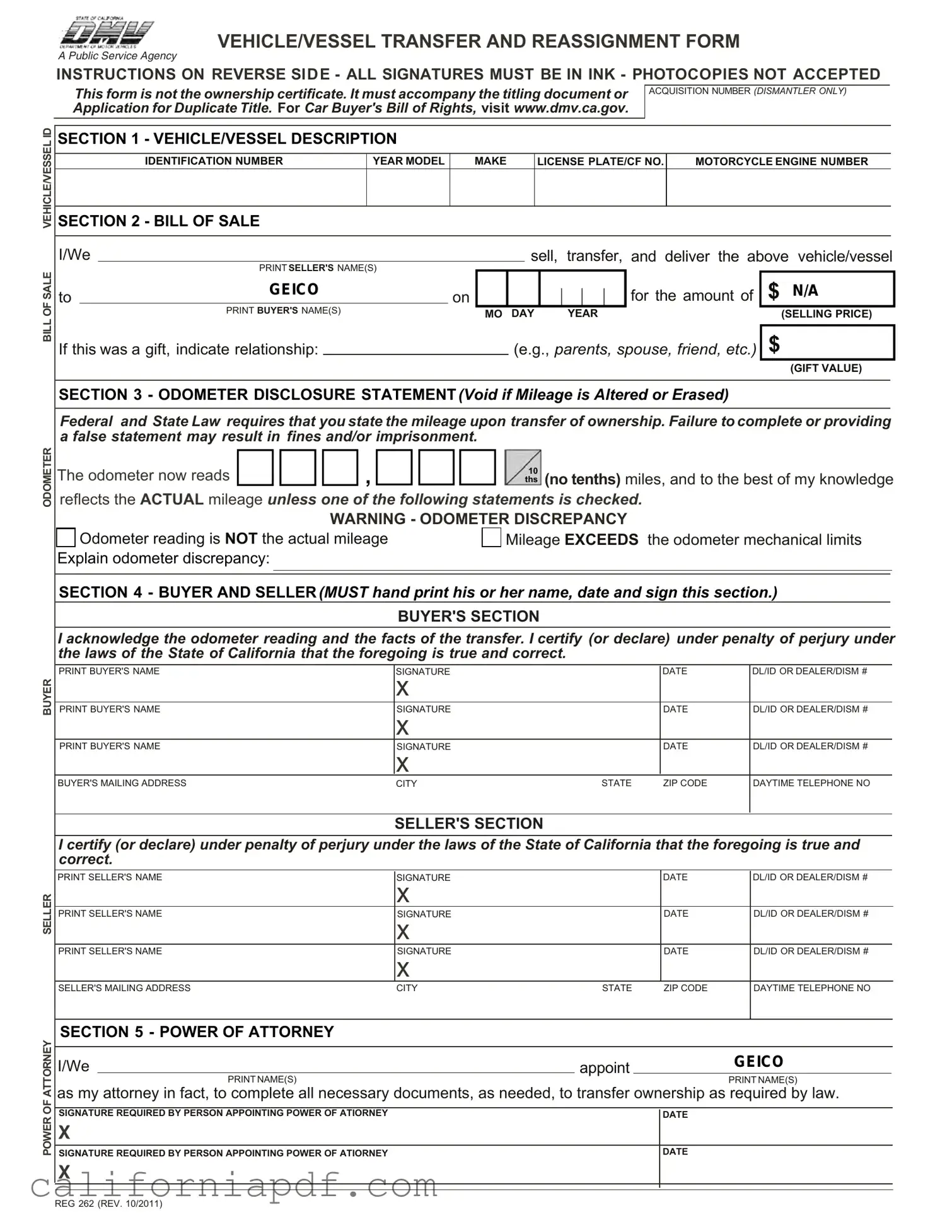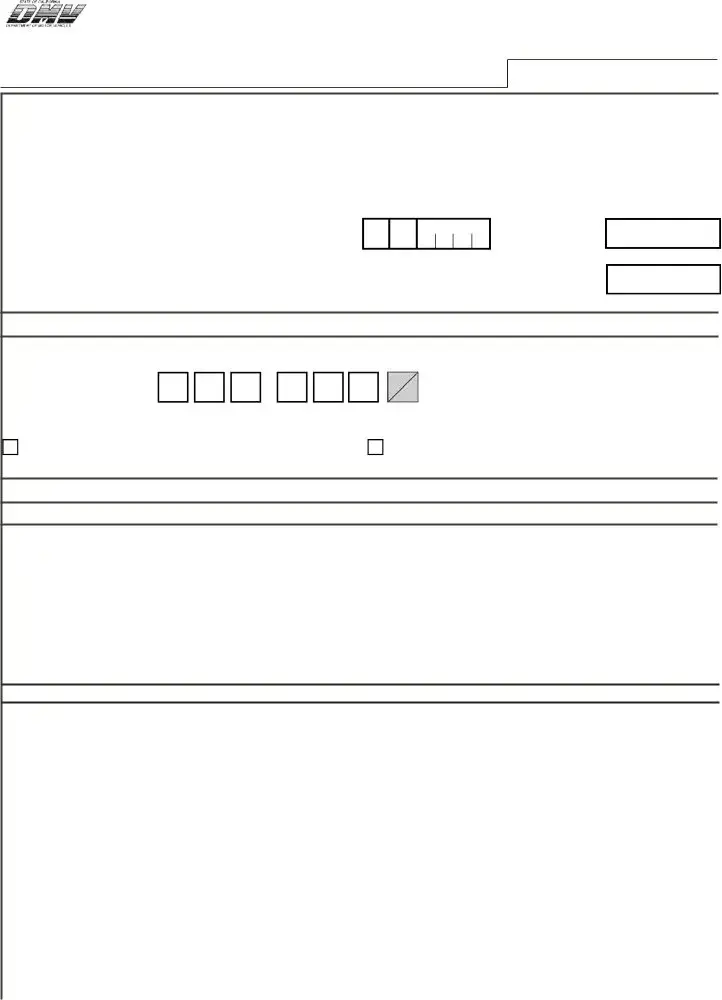The California REG 262 form is a document used by the California Department of Motor Vehicles (DMV) that covers multiple purposes during a vehicle or vessel transaction. This includes acting as a bill of sale, an odometer disclosure statement, and power of attorney if needed. It is an essential document for transferring ownership, and it must accompany the title or Application for Duplicate Title when a vehicle or vessel is sold or otherwise transferred in California.
Photocopies of the REG 262 form are not accepted because the DMV requires original signatures in ink. This policy helps prevent fraud and ensures that the transaction is legally binding. For record-keeping, sellers and buyers are encouraged to keep photocopies of the completed form, but the original must be submitted for the transaction to be processed.
The REG 262 form is not available online due to the requirement for non-erasable ink signatures and the DMV's control over the distribution of this sensitive document. To obtain a form, you must visit a DMV office or request the form to be mailed to you by contacting the DMV through their telephone support or official website.
The odometer disclosure statement is a federally and state-required section that records the mileage of a vehicle at the time of sale. It serves as a record to ensure the accuracy of the vehicle's mileage and protect buyers from odometer fraud. Altering or providing a false mileage statement can lead to fines and/or imprisonment. It's vital for keeping an honest and transparent record of the vehicle's history.
In the vehicle/vessel description section, you must provide detailed information about the vehicle or vessel being sold or transferred. This includes the identification number (VIN or HIN), year, model, make, license plate/CF number, and, if applicable, the motorcycle engine number. This information precisely identifies the vehicle or vessel involved in the transaction.
Can the odometer disclosure statement be completed using power of attorney?
No, the odometer disclosure statement cannot be completed by power of attorney. This requirement ensures that the individual transferring ownership personally attests to the accuracy of the odometer reading, thereby reducing the risk of odometer fraud. The signature on the odometer disclosure section must be directly from the seller.
The power of attorney section on the REG 262 form allows a vehicle or vessel owner to appoint an individual or company to act on their behalf to complete the necessary documents for transferring ownership as required by law. However, it's important to note that this section cannot be used for the odometer disclosure statement.
What should I do if there's an odometer discrepancy?
If there is an odometer discrepancy, you must check the appropriate box on the odometer disclosure statement section of the REG 262 form, explaining the discrepancy. Odometer discrepancies include situations where the odometer reading is not the actual mileage or the mileage exceeds the odometer's mechanical limits. Accurately reporting any discrepancies is crucial for maintaining transparency and legality in the transaction.
Who needs to sign the buyer and seller sections?
-
Buyer's Section:
To be completed by the buyer, acknowledging the odometer reading and accepting the facts of the transfer. The buyer must handprint their name, sign, date, and provide their contact information.
-
Seller's Section:
To be completed by the seller, certifying the accuracy of information provided and releasing ownership. The seller must handprint their name, sign, date, and provide their contact information.
Note: Co-owners joined by "AND" require the signature of each owner, whereas co-owners joined by "OR" require the signature of at least one owner. For businesses or companies, the printed name and an authorized representative's signature are necessary.

